“Utsa Hazarika: Living As A Nation”
YoU Exhibition
October 2, 2021
For her Year of Uncertainty project, Artist-In-Residence Utsa Hazarika expands a body of artwork, research, and analysis on the subject of diasporic Desi identity.
Listen to Utsa Hazarika’s exhibition soundtrack and artist audio guide:
Click here to discover the samples/bibliography in order of appearance.
Living As A Nation explores the connections that are forged by Desi people outside of the borders of South Asian nation states. Developing forms of documentation and storytelling that move beyond the limits of academic social research, the artist asks: How do you chart the complexity of culture that is dislocated from its place of origin? What is the power of collective memory to withstand migration and political acts of disempowerment or erasure?
Hazarika has planned for the contents of her gallery to shift and grow over the course of the Year of Uncertainty’s three phases, to reveal different combinations of still and moving images, sculpture, and ephemera configured to embody and encourage reflection on spatial and temporal transits. These evolving forms hold histories, contemporary narratives, and personal reflections. Among the artist’s research areas are new movements for equality emerging in South Asia; archival maps of South Asia that explore its shifting conceptual terrain; narratives of historical and contemporary South Asian culture in Britain; and the Desi art and activism of community organizations in Queens, such as YoU Community Partner, Sakhi. In commingling them together, Hazarika acknowledges the multiplicity of truth, problems of representation, and the inextricable relationships between subjectivity and belonging.
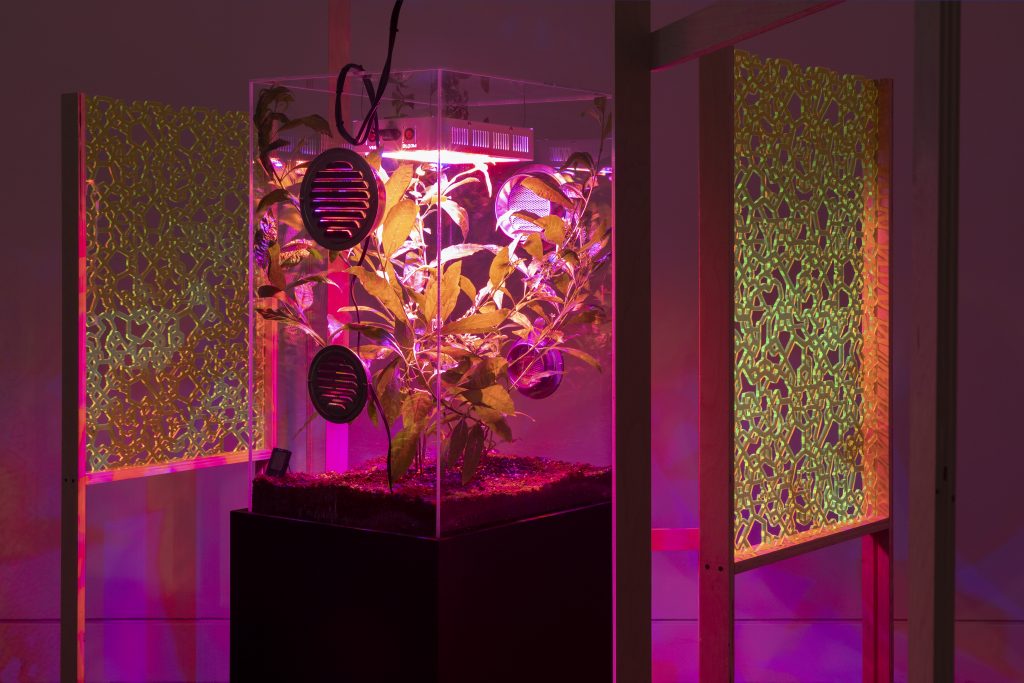
Image Description: On top of a black pedestal, a glass box with metal vents houses a large jasmine plant bathed in pink light. On either side, a rectangle of semi-transparent sheet with a green maze structure is held up by unfinished wood.
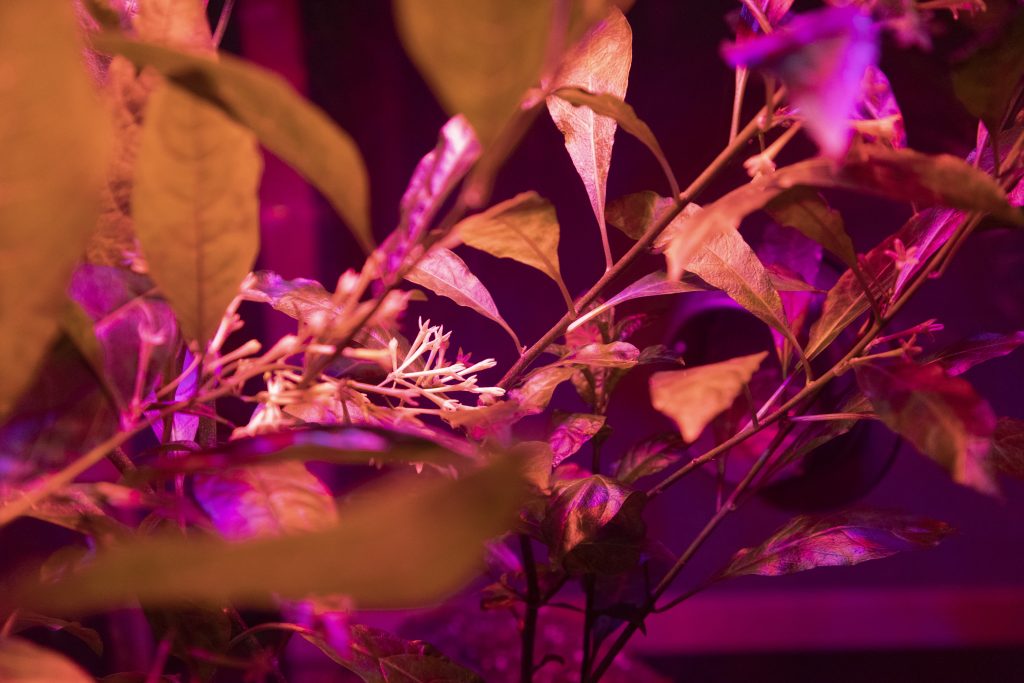
Image Description: Close-up of jasmine plant leaves and flowers in bloom under pink light.
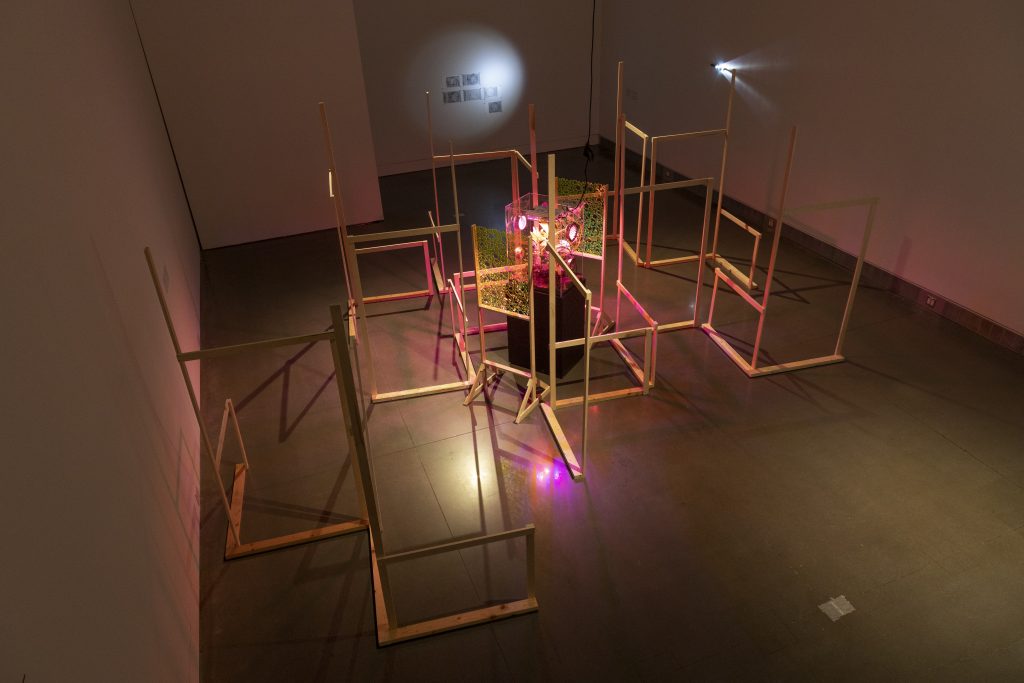
Image Description: In a dark gallery, a maze of free-standing thin wooden frames surround a box containing a jasmine plant. Five small archival maps on the wall are illuminated by a spotlight, and on the adjacent wall a small flashlight shines bright.
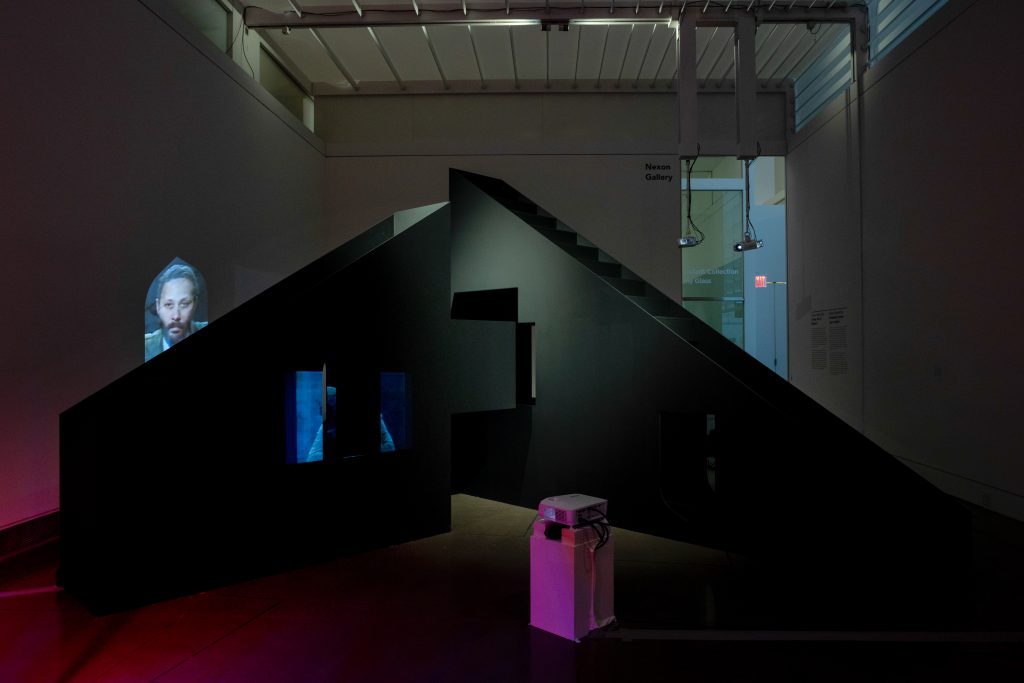
Image Description: Two huge black triangular sundial structures with stairs contain holes through which videos are projected. A small projector on the floor shines through a square hole in the left triangle, projecting a news anchor’s face onto the opposite wall. Two projectors hang from the ceiling on the right, facing the larger black sculpture.
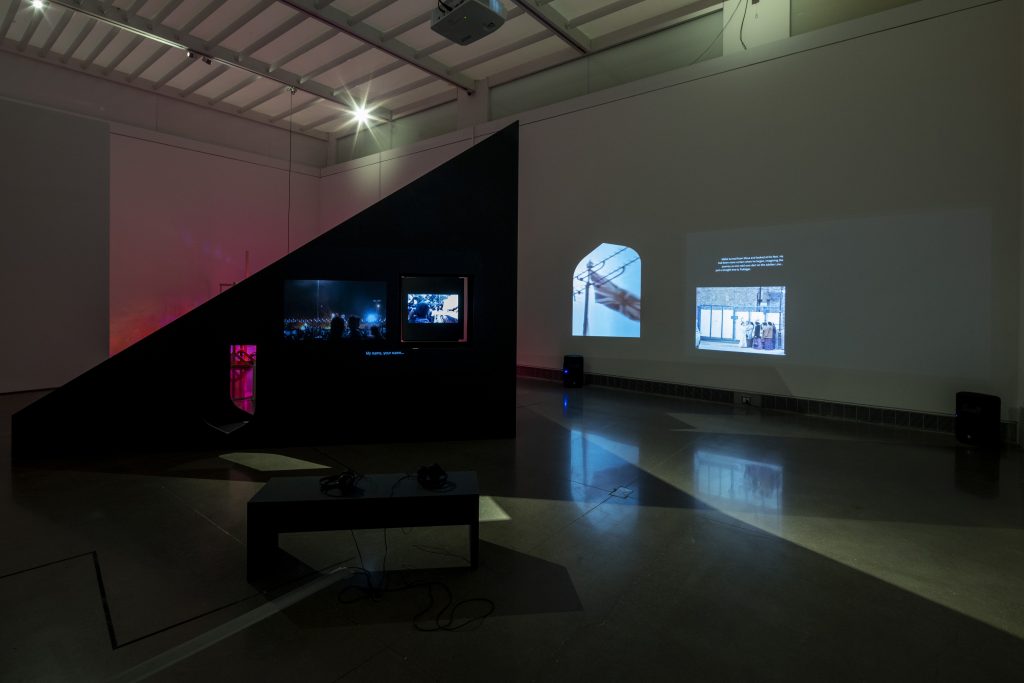
Image Description: Behind a black bench with headphones is a huge triangular sundial structure containing two square cutouts through which protest video stills are projected. On the white wall to the right are two more projections: an archival Union Jack flag, and small white text above a still of a group of South Asian women on a labor strike.
Related Tags